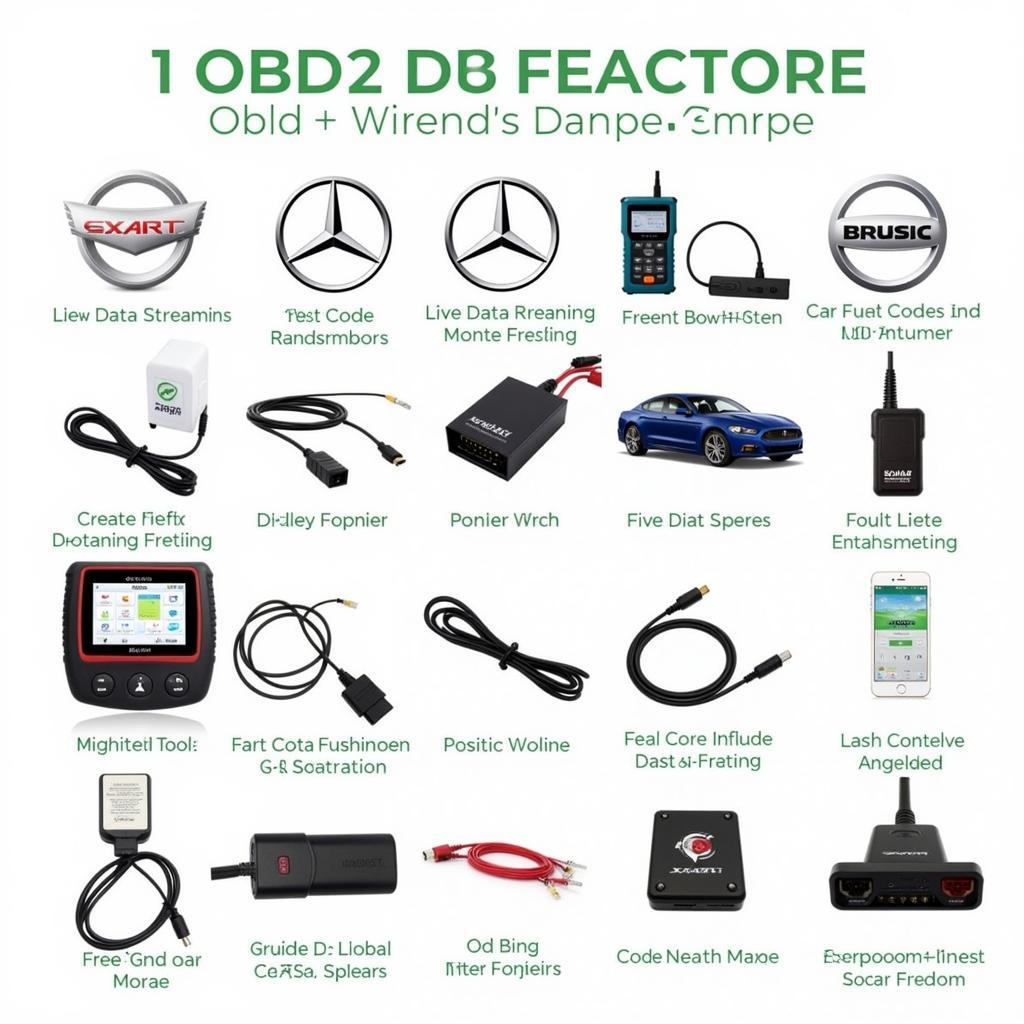VCDS injector coding is a crucial aspect of modern diesel engine maintenance and repair. Understanding this process allows for precise fuel delivery, optimal engine performance, and reduced emissions. This guide delves into the intricacies of VCDS injector coding, providing valuable insights for car owners, mechanics, and automotive technicians.
What is VCDS Injector Coding?
VCDS, or Vag-Com Diagnostic System, is a powerful software tool used to diagnose, program, and troubleshoot Volkswagen Audi Group (VAG) vehicles. One of its key functions is injector coding, which involves assigning a unique identification code to each fuel injector. This code, programmed into the engine control unit (ECU), informs the ECU about the specific characteristics of each injector, enabling precise fuel delivery. This precision is essential for maintaining smooth engine operation, optimizing fuel efficiency, and minimizing harmful emissions.
Similar to vcds engine measuring blocks, understanding the data provided by VCDS is essential for effective injector coding.
Why is VCDS Injector Coding Necessary?
Injector coding is necessary for several reasons, primarily due to manufacturing variations between injectors. Even seemingly identical injectors can have slight differences in their internal components and flow characteristics. These variations, if not accounted for, can lead to uneven fuel delivery, rough idling, reduced power output, and increased emissions. By coding each injector, the ECU can compensate for these variations and ensure that each cylinder receives the correct amount of fuel at the right time.
How to Perform VCDS Injector Coding
Performing VCDS injector coding requires the VCDS software, a compatible cable to connect to the vehicle’s OBD-II port, and the correct injector codes. The process generally involves these steps:
- Connect the VCDS cable to the vehicle’s OBD-II port and your computer.
- Launch the VCDS software and select the appropriate vehicle model.
- Navigate to the “Engine” control module.
- Select “Coding” or “Adaptation.”
- Locate the injector coding section.
- Enter the unique code for each injector in the designated field.
- Save the changes and verify the coding.
“Proper injector coding is paramount for optimal engine performance,” says renowned automotive diagnostician, Dr. Robert Hernandez. “It ensures balanced fuel delivery across all cylinders, contributing to smoother running and improved fuel economy.”
Common Issues with VCDS Injector Coding
While VCDS injector coding is a relatively straightforward process, some issues can arise. One common problem is incorrect code entry. Entering the wrong code can lead to a variety of engine performance problems. Another issue is vcds injector coding out of range, which can indicate a faulty injector or a problem with the ECU. It’s important to double-check the codes and consult reliable sources if you encounter any difficulties.
Just as understanding vcds fuel pressure measuring block is critical for diagnosing fuel system issues, knowing how to interpret VCDS injector coding data is crucial.
Troubleshooting VCDS Injector Coding Problems
If you encounter problems with VCDS injector coding, several troubleshooting steps can be taken. First, verify that you have the correct codes for your injectors. These codes are usually printed on the injectors themselves or can be obtained from the dealer or a reputable parts supplier. Next, ensure that you are using the latest version of the VCDS software and that your cable is functioning correctly. If the problem persists, consult with a qualified automotive technician experienced in VCDS diagnostics and programming.
You might find that learning what can vcds do can help you troubleshoot other potential issues related to your vehicle.
The Importance of Accurate VCDS Injector Coding
Accurate VCDS injector coding is essential for maintaining the health and performance of your diesel engine. It plays a crucial role in minimizing emissions, optimizing fuel economy, and ensuring smooth engine operation. Taking the time to understand and correctly apply VCDS injector coding procedures can save you time and money in the long run.
Conclusion
VCDS injector coding is a fundamental process for modern diesel engines. Understanding and correctly applying this process ensures optimal engine performance, reduces emissions, and improves fuel efficiency. This comprehensive guide has provided valuable insights into the intricacies of VCDS injector coding, equipping car owners, mechanics, and automotive technicians with the knowledge to diagnose, program, and troubleshoot injector-related issues effectively. Remember, accurate injector coding is crucial for maintaining the health and longevity of your diesel engine. Consider exploring our resources on vcds audi a7 for model-specific information.
FAQ
-
What is VCDS injector coding? It’s the process of assigning a unique code to each fuel injector, allowing the ECU to optimize fuel delivery.
-
Why is injector coding necessary? It compensates for manufacturing variations between injectors, ensuring smooth engine operation and reduced emissions.
-
What tools are required for injector coding? You need VCDS software, a compatible cable, and the correct injector codes.
-
What are common issues with injector coding? Incorrect code entry and “out of range” errors are common problems.
-
How can I troubleshoot injector coding problems? Verify the codes, ensure your software is updated, and consult a qualified technician if necessary.
For further assistance, please contact us via Whatsapp: +1 (641) 206-8880, Email: CARDIAGTECH[email protected] or visit us at 276 Reock St, City of Orange, NJ 07050, United States. We have a 24/7 customer support team.

